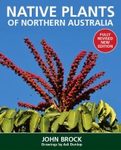By: Rebecca Grumet(Editor), Nurit Katzir(Editor), Jordi Garcia-Mas(Editor)
430 pages, 61 colour illustrations, 35 tables
![Genetics and Genomics of Cucurbitaceae Genetics and Genomics of Cucurbitaceae]()
Click to have a closer look
About this book
Contents
Customer reviews
Related titles
About this book
Genetics and Genomics of Cucurbitaceae provides an overview of the current state of knowledge of the genetics and genomics of the agriculturally important Cucurbitaceae plant family, which includes crops such as watermelon, melon, cucumber, summer and winter squashes, pumpkins, and gourds. Recent years have resulted in tremendous increases in our knowledge of these species due to large scale genomic and transcriptomic studies and production of draft genomes for the four major species, Citrullus lanatus, Cucumis melo, Cucumis sativus, and Cucurbita spp. This text examines genetic resources and structural and functional genomics for each species group and across species groups. In addition, it explores genomic-informed understanding and commonalities in cucurbit biology with respect to vegetative growth, floral development and sex expression, fruit growth and development, and important fruit quality traits.
Contents
- Introduction
- Cultivation and uses of cucurbits
- Evolution and phylogeny of the cucurbits
- Genetic Resources of Melon
- Genetic resources of cucumber
- Genetic resources of watermelon
- Genetic resources of Cucurbita spp
- Genetic resources for minor cucurbit crops
- Genetic mapping of complex traits in cucurbits (populations, genetic maps and traits)
- The melon genome
- The cucumber genome
- The watermelon genome
- Cucurbita genome(s)
- The genome of minor cucurbit crops
- Comparative genomics of the Cucurbitaceae
- Organellar genomes of the cucurbits
- Databases and bioinformatics for cucurbit species
- Cucurbit mutants and tilling populations
- Genetic transformation of cucurbit species
- VIGS and functional analyses
- Phloem
- Grafting
- Floral sex expression
- Fruit growth and development
- Fruit quality
- Genomic/transcriptomic analysis
- Sugar and organic acids
- Aroma
- Color
- Fruit ripening
- Disease resistance
- Phytochemistry
- Abiotic stress
- Bridging classical and genomic approaches to cucurbit breeding
- Opportunities for genomic applications to cucurbit breeding
Customer Reviews
By: Rebecca Grumet(Editor), Nurit Katzir(Editor), Jordi Garcia-Mas(Editor)
430 pages, 61 colour illustrations, 35 tables











































